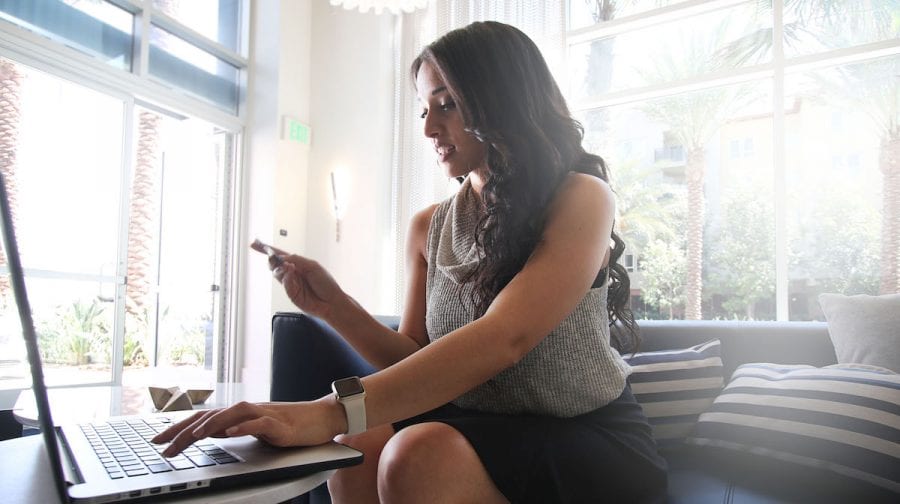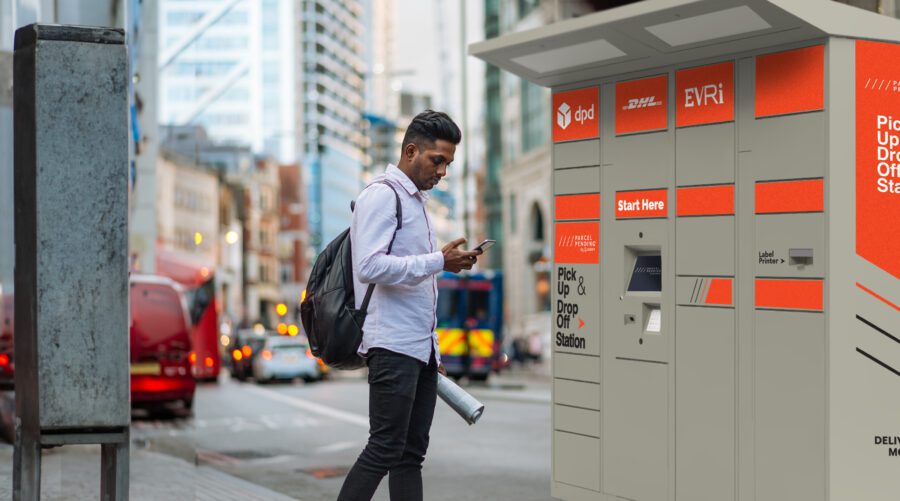
Multifamily
Rising Consumer Expectations: Creating New Challenges & Opportunities for Multifamily Communities
Written by: Colleen Lambros
7 Min Read
Published: October 4, 2019
Updated: April 4, 2023
Today’s Residents are Today’s Consumers
We are swept up in a world of stunning, exponential change – an age of disruption.
If you reach into your purse or your pocket, what do you find? A handheld device that contains the entire wealth of all human knowledge and history, that can make contact with practically anyone on Earth, and that can connect you with a product or service immediately.
When you contemplate that fact alone, it’s truly staggering how much our lives have evolved. We find ourselves in the midst of a mind-blowing era in human history where change is happening at a pace never before experienced in human history. Keeping pace with this break-neck innovation has created both significant challenges and significant opportunities for multifamily communities.
The rapid integration of technology into our everyday lives has had an undeniable impact on the way we work, interact, and live. Automation and digital innovation are completely transforming the way we use goods and services and, in the end, are significantly impacting and elevating our expectations as consumers.
Today’s consumers don’t struggle with listening to or skipping a song they don’t like because it’s next up on an album or a tape. We watch what we want when we want. We’re able to order online and get almost anything delivered for free, guaranteed, the next day, any day of the week. We can call a car on-demand to get us where we need to go and have it arrive in less than five minutes. We can have food from any restaurant delivered with a few taps on our phone. Smart technology lets us remotely adjust the temperature control at our home or even turn on the lights without hitting a switch.
Simply put, all of us–including me–demand more. We expect our environment to be personally tailored to us as individuals.
More convenience. More speed. More access. More security. More personalization.
In this ever-changing world where innovation and technology are continuously pushing the bar higher for customer experience, residents now have totally different expectations for their living experience. Instead of luxury amenities used occasionally, like hot yoga rooms, resort-style pools, or mega clubhouses; residents instead expect daily-use, integrated amenities that enable the continuation of the easy and cohesive living experience they get everywhere else.
Residents simply want and expect their living environment to be as on-demand as the rest of their lives. Give it to me when I want, where I want, and exactly how I want it. And all while being conveniently integrated into my other daily experiences.
An Opportunity for Multifamily Communities to Adapt Based on Rising Consumer Expectations
The apartment should be where all of your experiences come together into one seamless integration. Because almost half of many residents’ monthly salary goes towards rent, it is not unrealistic or unexpected that residents are starting to expect more from their experience than a gym, pool, or dog wash station.
Historically, the multifamily housing industry has been challenged to change as rapidly as consumer expectations. Developers, investors, architects, interior designers, and property managers strive to respond to the shifting winds of consumer expectations but struggle to find ways to change their existing communities to meet these needs within today’s disruptive environment.
So, how can the multifamily industry adjust to this variable landscape?
We can start by examining what is happening beyond the four walls of the community by watching the trends and practices residents are adopting and demanding in their daily lives, then making efforts to serve and address those needs. I want to discuss one particular changing consumer behavior and how Parcel Pending seeks to help multifamily communities respond to these shifting demands.
Technology’s Impact on Multifamily Housing
When I read the 2018 Multifamily Executive Report1 on trends that are disrupting multifamily housing, two points stood out:
- Nearly two thirds (63%) of respondents to the NMHC 2018 Consumer Housing Insights Survey said their lives are so hectic that they look for ways to make things easier.
- By 2020, 26 billion devices will be connected through the cloud-based Internet of Things (IoT).
The second point is a matter of particular importance, since it illustrates consumers’ demand for convenience. From smart home control systems, to digital payments, to on-demand trash pick-up, to smart package lockers, each new piece of technology introduces an added benefit to the life of a resident and/or instills them with a heightened expectation of integration, service, and personalization.
Every addition is one less thing they need to worry about, consider, or deal with–saving them time, money, and stress.
Packages and Multifamily Housing
One area where I’ve seen particularly strong demand for security and convenience lies in the mailroom. This is largely the result of the meteoric rise of online shopping, and the corresponding shift in consumer habits as cyber purchasing with on-demand delivery and pick-up becomes the norm.
Today you can order practically any item on earth and have it in your hands within a day. From household supplies to electronics, from medicine to groceries – it can easily be ordered and delivered straight to your front door. In 2018, U.S. shoppers made over $90 billion in retail purchases2 on their phones, up from $7.8 billion in 2017, and that number will continue to rise.
Because of the e-Commerce boom, there are now billions of packages being delivered every single year. As is often the case, this has led to unforeseen consequences and operational overload, creating three glaring pain points for multifamily housing units:
Strain on leasing office staff – The constant influx of packages puts an incredible strain on mailrooms. This is especially true for the vast majority of apartment buildings and communities that were built more than two decades ago. Few, if any, already have the necessary infrastructure in place to handle the massive influx of packages.
This strain comes from the fact that there are too many packages being delivered on a daily basis. Simply put, communities lack the space, staff, or time to sort through the constant deluge of shipments.
A community’s challenges handling packages can typically lead to the second pain point:
Increased issues with package theft, damage, or loss – According to a study conducted by Wakefield Research3, 1 in 4 people have fallen victim to package theft, and more than half know someone who has. The average value of stolen packages was around $1404.
I’ve experienced the feeling of rage and violation that comes with having your online purchases stolen. You may have too. It’s easy to imagine how a resident feels when their belongings are stolen right from their front doorstep. The sense of security and trust they’ve come to expect from their community is at risk.
Not to mention the third, and most important pain point:
Demand for 24/7 access to packages – Strategy&, PWC’s strategy consulting business, estimates the number of packages delivered annually will rise to 16 billion by 20205, up from 11 billion in 2018. This directly correlates to an increase in demand for 24/7 access to packages.
Carriers are already responding to this shift in consumer expectations. FedEx, for example, recently announced6 it would start offering Sunday deliveries to meet “increasing demand from online shoppers and e-commerce shippers for seven-day service”, according to FedEx President and Chief Operating Officer Raj Subramaniam.
Residents want to know they can order something when they want or need it and know they can retrieve it at their convenience. Tethering package pickup to leasing office hours limits the ease, accessibility, and personalization we expect in our modern living experience.
Solutions for Package Overload
Parcel Pending responded to these pain points by introducing our revolutionary smart electronic lockers. This package management solution was created to ensure simple, secure delivery and retrieval of any online order.
The smart lockers offer several benefits meant to reduce the anxiety and inconvenience of receiving a package:
- Smart – Infrared scanners detect and categorize the packages in each locker.
- Secure – 24/7 cloud-based video surveillance comes standard.
- Cool – Refrigerated lockers keep temperature-sensitive items cool.
- Courier Agnostic – 100% deliverability from all couriers.
- Convenient – Fits practically any sized package.
- Mobile-Friendly – Delivery notifications sent to your phone.
At the 2017 Multifamily Executive Conference, Greg Vance, project manager at Century West Partners (CWP) made an excellent point about this growing onslaught of packages7:
“Properties with an overwhelming number of deliveries can partner with a package delivery provider such as Parcel Pending […] to manage their residents’ packages. The providers’ storage lockers make managing deliveries easy in several ways–neither the residents nor the property staff face time restrictions on package pickup; operation costs are often reduced; and property security increases when managers install new cameras to monitor the package-storage systems.”
Multifamily Communities Working to Meet Consumer Expectations
The multifamily industry is great at creating a living environment that makes a person feel comfortable and safe. Now the challenge is to create experiences and services that integrate with today’s consumers and their living expectations.
If you’re a decision-maker, consider the ways you can instill this sense of trust in your residents. Parcel Pending has tossed you a potential lifeline. Are you going to reach out and take it?
Sources:
- Shanesy, Lauren. Multifamily Executive. Report: These Trends Are Radically Disrupting Multifamily Housing. (2018, March 14). https://www.multifamilyexecutive.com/property-management/apartment-trends/report-these-trends-are-radically-disrupting-multifamily-housing_o.
- Lacy, Lisa. AdWeek. Mobile Shopping Is on the Rise, But Remains Split Between the Mobile Web and Apps. (2018, February 23). https://www.adweek.com/digital/mobile-shopping-is-on-the-rise-but-remains-split-between-the-mobile-web-and-apps/.
- Comcast. (2018, November 15). Comcast’s New Security Camera Features Help Consumers Spot Package Theft ‘Grinches’ This Holiday Season. Retrieved from https://corporate.comcast.com/
- Ring. (n.d.) Home Security: Smart Technology Protecting Consumers’ Homes. Retrieved from https://ring.com/press
- Laseter, T., Tipping, A., & Duiven, F. Strategy + Business. The Rise of the Last-Mile Exchange. (2018, July 30). https://www.strategy-business.com/article/The-Rise-of-the-Last-Mile-Exchange?gko=d0a62.
- Ziobrio, Paul. The Wall Street Journal. (2019, May 30). FedEx to Deliver Packages 7 Days a Week. https://www.wsj.com/articles/fedex-to-deliver-packages-7-days-a-week-11559225213.
- Shanesy, Lauren. Multifamily Executive. (2017, November 02). Technology Takes the Stage at MFEC 2017. https://www.multifamilyexecutive.com/technology/technology-takes-the-stage-at-mfec-2017_o.



